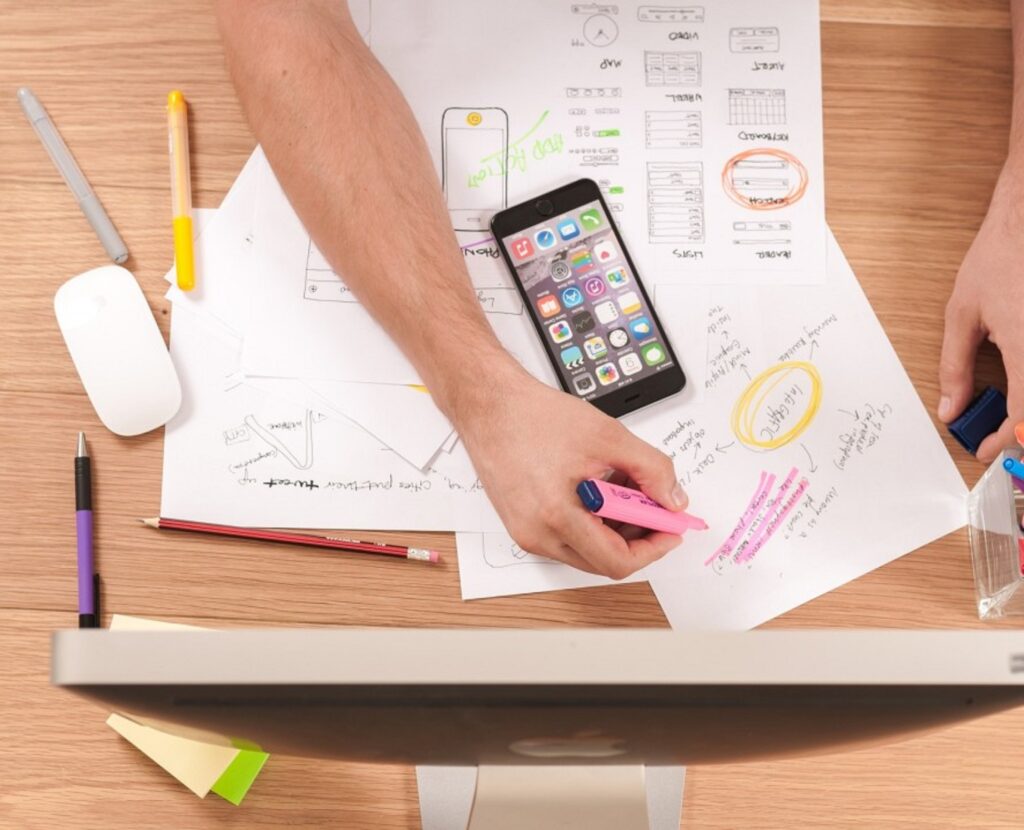User Experience (UX)
User Experience (UX) is a critical factor in designing and establishing IT systems that prioritize the ease, satisfaction, and efficiency of the end user. UX in IT is a multidisciplinary approach that focuses on improving the overall interaction between users and technology. It encompasses the design, usability, and functionality of software and hardware systems, with the aim of providing a seamless and intuitive experience for users. UX in IT is often applied to software interfaces, web applications, and mobile apps, ensuring they are user-friendly, accessible, and engaging.

A well-designed UX can drastically improve productivity, reduce frustration, and ensure a positive perception of the technology by users. It’s not only about aesthetics but also about creating intuitive flows, reducing unnecessary steps, and offering a consistent experience across different platforms. UX design also takes into account accessibility for users with disabilities, performance speed, and the overall emotional response users have when interacting with the system.
In addition to enhancing user satisfaction, UX in IT also provides valuable insights for businesses. By focusing on the user journey and gathering feedback, companies can identify pain points, optimize design elements, and improve engagement, which ultimately leads to higher conversion rates, reduced churn, and greater customer loyalty.
The advantages of UX in IT are:
- Consistency – UX design ensures a uniform and cohesive experience across different devices and platforms.
- Support for multiple user needs – A well-executed UX accommodates a diverse range of users and their preferences.
- Streamlined workflows – UX design improves the efficiency of interaction, reducing the number of steps needed to complete tasks.
- Faster troubleshooting – An intuitive UX reduces user errors, making issues easier to isolate and resolve.
- Support for future applications – A solid UX framework accommodates future technological advancements without significant redesigns.

UX Design Considerations
User Interface (UI) Design UI design is a core component of UX and involves the visual layout of elements within a system. It encompasses everything from buttons, icons, and typography to color schemes and spacing. UI design aims to make the interaction with the system both aesthetically pleasing and easy to navigate.
User Testing User testing is an essential part of the UX process. By observing real users interact with a system, designers can gather valuable feedback on the functionality, layout, and usability of the system. User testing helps uncover pain points and opportunities for improvement.
Usability and Accessibility Ensuring that IT systems are usable and accessible to all individuals, including those with disabilities, is a crucial aspect of UX. This involves applying best practices for accessibility, such as making content readable for screen readers, ensuring keyboard navigation, and accommodating colorblind users.
This includes:
- Conducting usability tests to identify design issues
- Providing clear instructions and tooltips for new users
- Designing for various user needs, including those with visual or motor impairments
Networking Setup for UX Optimization
When setting up IT systems that prioritize user experience, it is important to consider the network architecture and configuration to ensure smooth performance. For example, selecting optimal node locations, network hubs, and switches that minimize latency and optimize speed will contribute to a more seamless UX. Properly configured networking infrastructure ensures that users can interact with the system without frustrating delays or disruptions.
Node locations should be strategically planned for ease of access and connectivity, ensuring that user interactions with IT systems are as quick and efficient as possible. Hubs and switches should be placed in secure and accessible locations to allow for easy network management and future upgrades, ensuring that the infrastructure can evolve as the system scales to meet future UX needs.

If you’d like to contact us and get in touch with us requesting any of our Electrical & Mechanical services, surveys or quotations you can do so by phone, email or by post. If you email us, we’ll always contact you within 1 working day.
